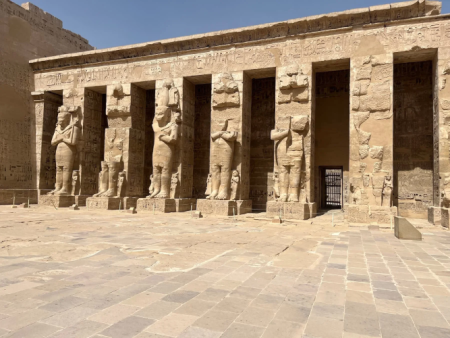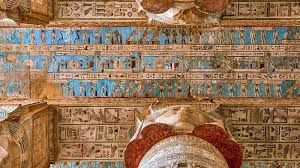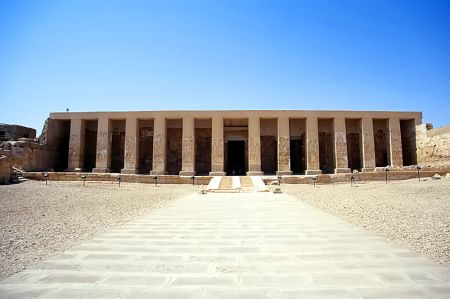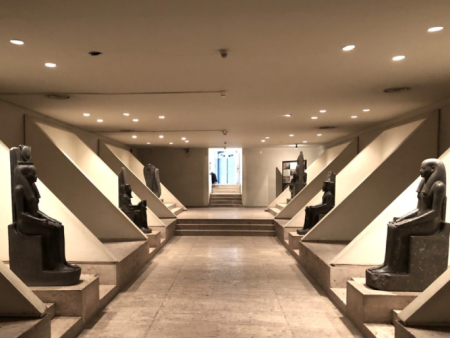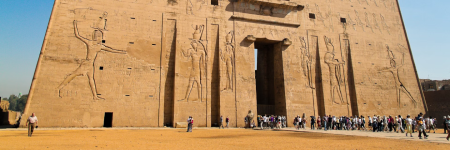Valley of the Queens
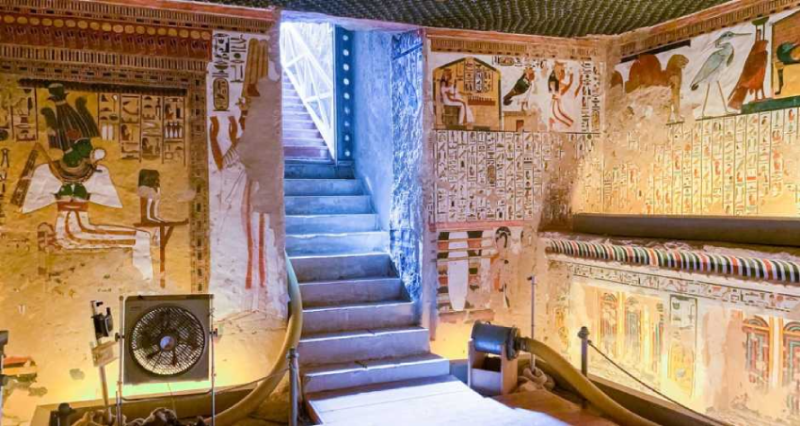
Valley of the Queens: The Eternal Resting Place of Egypt’s Royal Women
Hidden within the rugged cliffs of Luxor’s Theban Necropolis lies a sacred site that embodies grace, power, and eternal devotion — the Valley of the Queens. This exquisite burial ground, known in ancient times as Ta-Set-Neferu or ‘The Place of Beauty,’ serves as the final resting place for Egypt’s royal wives, princesses, and princes from the 18th to the 20th Dynasties. Unlike the more famous The Valley of the Kings, which enshrined pharaohs in monumental tombs, the Valley of the Queens honors the women who stood beside them — offering an intimate glimpse into ancient Egyptian art, love, and divinity.
Located near the Luxor City, this serene valley captures the essence of royal femininity through its vibrant tomb paintings, celestial symbols, and inscriptions that celebrate queens as goddesses and eternal companions in the afterlife. The most famous tomb — that of Queen Nefertari, the beloved wife of Pharaoh Ramses II — remains one of the most astonishing artistic achievements of the ancient world. Every wall bursts with color, depicting her passage to the afterlife guided by deities like Isis, Hathor, and Osiris.
For travelers seeking authentic encounters with ancient Egyptian culture, the Valley of the Queens presents a journey beyond monuments — a deep dive into the soul of Egypt’s divine womanhood. Whether part of curated Egypt Travel Packages or independent explorations along Egypt Nile Cruises, visiting this valley is a breathtaking experience that connects the past to the present in a whisper of eternity.
History and Purpose of the Valley of the Queens
The Valley of the Queens began as a modest burial site during the 18th Dynasty when pharaohs sought separate necropolises for their consorts. Strategically positioned near the sacred complex of the Temple of Hatshepsut and the mortuary temples of Deir el-Medina, its placement reflected both symbolic protection and spiritual balance. The site evolved into a royal cemetery housing over ninety tombs, each carved into limestone cliffs that blend naturally into the desert landscape.
These tombs were not reserved solely for queens. Many princes, royal children, and high-ranking women were also interred here. This inclusion underscores the Egyptians’ belief that the divine essence of royalty extended beyond rulers to their families. The valley’s design, rich in symbolism, mirrors the journey of life, death, and rebirth central to Egyptian cosmology.
The Significance of ‘Ta-Set-Neferu’ — The Place of Beauty
In ancient Egyptian language, ‘Ta-Set-Neferu’ evokes grace and divine perfection. The Valley of the Queens wasn’t merely a burial site — it was a portal to eternity. Each tomb’s artwork carried spiritual meanings: celestial ceilings symbolized the heavens, and scenes of daily life represented blissful continuity after death. This idea of transformation, deeply rooted in Egyptian mythology, made the valley both a sanctuary and a declaration of everlasting devotion.
Architectural Design and Artistic Mastery
The tombs in the Valley of the Queens exhibit exceptional craftsmanship. Builders from nearby Deir el-Medina — the same artisans responsible for the masterpieces of the Valley of the Kings — carved intricate chambers adorned with vivid pigments that remarkably survive millennia. The finest example, the Tomb of Nefertari (QV66), is a testament to the sophistication of Egyptian art. Its intricate depictions of the queen with gods like Anubis and Osiris reveal the profound belief in the journey of the soul.
Artisans combined natural pigments with mineral compounds, producing blues, reds, and yellows that symbolized cosmic energy and divine protection. These details show how the Egyptians mastered color psychology long before modern times, using it as a spiritual language to ensure eternal harmony.
Queen Nefertari’s Tomb: The Jewel of the Valley
When discussing the Valley of the Queens, one cannot overlook the radiant Tomb of Nefertari. Discovered by Ernesto Schiaparelli in 1904, this tomb remains one of the most iconic archaeological finds in Egypt. Dedicated to the beloved wife of Ramses II, Nefertari’s resting place epitomizes love immortalized in art. The walls bloom with hieroglyphs that tell her story — a queen transformed into a goddess.
Unlike many tombs that suffered looting, Nefertari’s tomb preserved much of its decoration. The scenes of the queen greeting gods, playing Senet, and crossing the threshold into eternity reflect her exalted status. Her beauty, wisdom, and devotion to the goddess Hathor elevated her among Egypt’s most revered women, rivaling figures like Cleopatra and Hatshepsut in fame. Those who admire Famous Egyptian Queens recognize Nefertari as a symbol of timeless elegance and divine connection.
Symbolism in Nefertari’s Tomb
Every inch of Nefertari’s tomb reflects the Egyptians’ obsession with the afterlife. Hieroglyphs glow with prayers and spells from the Book of the Dead, guiding her soul through Duat — the underworld — to join Osiris. The queen is depicted wearing elaborate crowns, jeweled necklaces, and divine regalia, symbolizing her transformation into an immortal being. The meticulous detail and emotional intimacy in these scenes underline why her tomb is often called the ‘Sistine Chapel of Ancient Egypt.’
Other Notable Tombs in the Valley of the Queens
While Nefertari’s tomb steals the spotlight, the Valley of the Queens houses numerous other equally fascinating tombs, such as those of Queen Tyti (QV52) and Prince Khaemwaset (QV44). Each reflects distinct artistic techniques, religious motifs, and inscriptions that unveil the evolution of funerary art through the New Kingdom. The diversity of styles reveals a dynamic period when Egyptian artisans reached artistic zeniths.
Visitors exploring the tombs witness changes in iconography, from vivid solar barques to symbolic lotus flowers and scenes of Ra’s celestial journey. Some tombs even show the influence of foreign artistry, hinting at trade and cultural exchange during the reigns of powerful pharaohs like Ramses III and Ramses VI. Linking your trip here with visits to the Colossi of Memnon and Luxor Temple enriches the experience, weaving together Egypt’s royal landscape.
The Valley’s Role in Ancient Egyptian Religion
The Valley of the Queens reflects ancient Egyptian theology, which revered the cycle of life and rebirth. The queens were seen as earthly embodiments of goddesses like Isis, Hathor, and Mut. Their tombs often depicted them nursing the young Horus, symbolizing fertility, protection, and continuity of divine kingship. Through these sacred murals, the queens not only transcended mortality but ensured their eternal roles as mothers of the nation and companions of the gods.
The Spiritual Geography of the Valley
The valley’s natural formation mirrors Egypt’s mythological landscape. Its cliffs represent the womb of the goddess Hathor, enveloping the tombs like a mother embracing her children. The western location of the necropolis aligned with the sun’s descent, embodying the transition from life to afterlife. This geography was no coincidence — it served as a cosmic stage for the soul’s rebirth into divine light.
Modern Discoveries and Conservation Efforts
Ongoing excavations continue to reveal new insights about the Valley of the Queens. Archaeologists have uncovered previously unknown tombs, fragments of funerary equipment, and clues about the artisans who built them. Conservation projects, such as those supported by UNESCO and the Getty Conservation Institute, focus on restoring fragile pigments and controlling humidity to preserve these masterpieces for future generations.
The restoration of Nefertari’s tomb, completed in the late 20th century, stands as a model of modern archaeological care. It balanced preservation with accessibility, allowing visitors to experience its splendor while protecting it from damage. For those intrigued by What are the new discoveries in Egypt?, the Valley of the Queens remains a hotbed of revelations that reshape our understanding of ancient Egyptian society.
How to Visit the Valley of the Queens Today
Located on Luxor’s west bank, the Valley of the Queens is easily accessible from major landmarks and popular travel routes. Many visitors include it in their Egypt Luxury Tours or combine it with scenic Best Nile River Cruises. The site is open year-round, but cooler months between October and April offer the most comfortable exploration conditions.
Guided tours provide historical context and exclusive access to certain tombs, which rotate openings to minimize deterioration. Photography restrictions vary, so checking current guidelines ensures a smooth experience. Beyond the tombs, the surrounding desert and nearby temples offer breathtaking panoramas — ideal for those passionate about Egypt photography tours.
FAQs About the Valley of the Queens
What is the Valley of the Queens?
The Valley of the Queens is an ancient necropolis in Luxor, Egypt, where royal wives, daughters, and princes of the New Kingdom were buried. Known as Ta-Set-Neferu, or ‘The Place of Beauty,’ it symbolizes divine femininity and eternal life in Egyptian belief.
Who was buried in the Valley of the Queens?
Most tombs belong to queens, princesses, and sons of pharaohs from the 18th to 20th Dynasties. The most famous burial is that of Queen Nefertari, wife of Ramses II, whose tomb is celebrated for its exquisite art and preservation.
Where is the Valley of the Queens located?
The Valley of the Queens lies on the west bank of the Nile, near Luxor, opposite the modern city. It’s part of the Theban Necropolis, close to other landmarks like the Valley of the Kings and the Temple of Hatshepsut.
How can travelers visit the Valley of the Queens?
Travelers can reach it through organized Egypt Excursions, guided tours, or private cars from Luxor. Many itineraries combine it with visits to the Colossi of Memnon and the nearby tombs of Deir el-Medina for a complete ancient experience.
What makes Nefertari’s tomb so famous?
Nefertari’s tomb stands out due to its vibrant colors, detailed hieroglyphs, and emotional artistry. Often called the most beautiful tomb in Egypt, it captures the queen’s transformation into a goddess, making it an unparalleled masterpiece of ancient Egyptian art.
Is the Valley of the Queens worth visiting?
Absolutely. It offers a more intimate and artistic experience compared to the Valley of the Kings. The site reveals the Egyptians’ deep reverence for women, religion, and eternal beauty — an unmissable highlight for anyone exploring Egypt’s royal legacy.
Conclusion: The Valley of the Queens — A Testament to Eternal Beauty
The Valley of the Queens remains a poetic tribute to love, divinity, and eternal life. Every tomb whispers stories of royal devotion, artistic brilliance, and spiritual transcendence. Whether you’re captivated by the Tomb of Nefertari or intrigued by the valley’s lesser-known treasures, this sacred place continues to enchant travelers and historians alike. A visit here isn’t just a step into ancient history — it’s an encounter with immortality itself, bathed in the golden glow of Luxor’s timeless desert.






